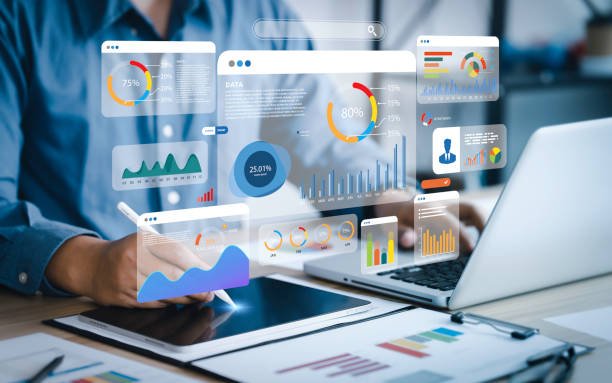Supply chain management is an essential part of any modern business, linking manufacturers, suppliers, distributors, and customers into a cohesive network. In the rapidly evolving market, businesses are looking for ways to enhance their operational efficiency, minimize costs, and deliver value to customers. One transformative force that has been gaining significant attention is Artificial Intelligence (AI), which is being implemented in supply chains worldwide to unlock new opportunities.
AI-powered tools and technologies are designed to optimize processes, improve decision-making, and enhance productivity. In this article, we’ll explore how AI is reshaping the landscape of supply chain management and why it is critical for businesses to leverage this technology.
Reducing Waste through Enhanced Forecasting and Demand Prediction
One of the greatest challenges businesses face is minimizing waste while meeting consumer demand. Traditional methods of demand forecasting are often inaccurate, leading to overproduction or understocking. This can result in significant waste, both in terms of unsold inventory and resources.
AI addresses this issue by analyzing historical sales data, weather patterns, market trends, and other relevant factors. Machine learning algorithms can predict future demand with remarkable accuracy, enabling businesses to better align their production and distribution processes. With AI, companies can optimize inventory levels, reduce surplus stock, and avoid stockouts, which in turn reduces waste and enhances profitability.
Streamlining Business Processes with Automation
Supply chains involve complex operations, from procurement to logistics and customer service. Managing these processes manually can be time-consuming and error-prone. AI-powered automation can significantly streamline business operations, making processes faster, more efficient, and less dependent on human intervention.
For example, AI chatbots can handle customer service inquiries, while AI systems can automate inventory management, warehouse operations, and order fulfillment. By automating routine tasks, businesses can save time, reduce operational costs, and allocate resources more effectively. This allows employees to focus on more strategic initiatives, leading to enhanced overall performance.
Improving Customer Satisfaction with AI-Driven Personalization
Customer satisfaction is a key driver of success in any business. With AI, companies can offer highly personalized experiences to their customers, which helps build trust and loyalty. By analyzing vast amounts of customer data, AI algorithms can identify individual preferences, purchasing patterns, and behavior.
Using these insights, businesses can offer targeted promotions, personalized recommendations, and tailored product offerings. AI can also optimize delivery times and ensure that customers receive the right products at the right time. This level of personalization not only enhances the customer experience but also increases retention rates, fostering long-term relationships between businesses and customers.
Maximizing Return on Investment (RoI) with AI-Optimized Pricing Strategies
Artificial Intelligence plays a pivotal role in helping businesses maximize their Return on Investment (RoI) by optimizing pricing strategies. AI algorithms can analyze various factors, including competitor pricing, customer demand, and market trends, to set the most profitable prices in real-time.
With AI’s predictive capabilities, businesses can dynamically adjust prices based on shifting market conditions, ensuring that they are always offering the most competitive and profitable pricing models. This can significantly improve a company’s bottom line, particularly in industries like retail and e-commerce, where margins are often thin.
AI-Driven Supply Chain Optimization for Long-Term Success
AI not only optimizes short-term processes but also contributes to long-term strategic planning. Businesses can use AI to forecast future trends, assess risks, and identify new market opportunities. This predictive capability allows companies to make data-driven decisions that enhance supply chain efficiency over time.
Additionally, AI can help companies adapt to disruptions such as supply chain interruptions or natural disasters by providing real-time data and actionable insights. By ensuring that the supply chain is resilient and flexible, AI empowers businesses to stay competitive and responsive to market changes.
Conclusion: Embrace AI for a Future-Ready Supply Chain
Artificial Intelligence is revolutionizing supply chain management by enhancing accuracy, reducing waste, improving customer satisfaction, and optimizing operational costs. Companies that integrate AI into their supply chain operations are positioning themselves for future success. As AI continues to evolve, its impact on supply chain management will only become more significant, making it a must-have technology for businesses aiming to stay ahead in a competitive market.
By embracing AI, businesses can unlock the full potential of their supply chain and create a more agile, efficient, and customer-centric operation. The future of supply chain management is undoubtedly AI-powered, and companies that invest in this technology today will reap the rewards tomorrow.








